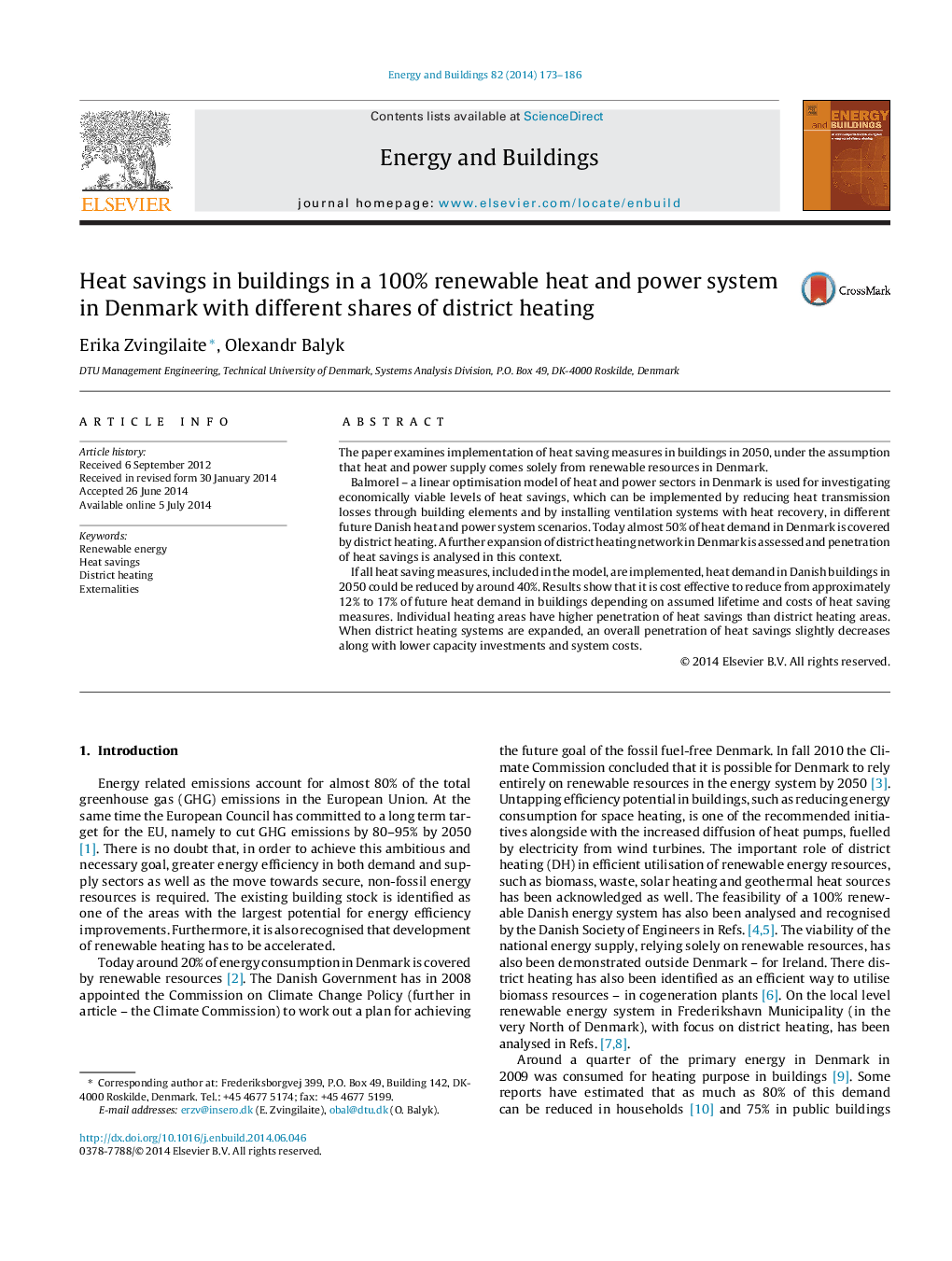| Article ID | Journal | Published Year | Pages | File Type |
|---|---|---|---|---|
| 262660 | Energy and Buildings | 2014 | 14 Pages |
•We examine heat savings in a renewable heat and power system in Denmark in 2050.•12–17% of heat demand in 2050 is reduced by heat savings in existing buildings.•When district heating is expanded to 70% of heat market heat savings decrease.•Heat savings potential is utilised more in areas with individual heating.
The paper examines implementation of heat saving measures in buildings in 2050, under the assumption that heat and power supply comes solely from renewable resources in Denmark.Balmorel – a linear optimisation model of heat and power sectors in Denmark is used for investigating economically viable levels of heat savings, which can be implemented by reducing heat transmission losses through building elements and by installing ventilation systems with heat recovery, in different future Danish heat and power system scenarios. Today almost 50% of heat demand in Denmark is covered by district heating. A further expansion of district heating network in Denmark is assessed and penetration of heat savings is analysed in this context.If all heat saving measures, included in the model, are implemented, heat demand in Danish buildings in 2050 could be reduced by around 40%. Results show that it is cost effective to reduce from approximately 12% to 17% of future heat demand in buildings depending on assumed lifetime and costs of heat saving measures. Individual heating areas have higher penetration of heat savings than district heating areas. When district heating systems are expanded, an overall penetration of heat savings slightly decreases along with lower capacity investments and system costs.
